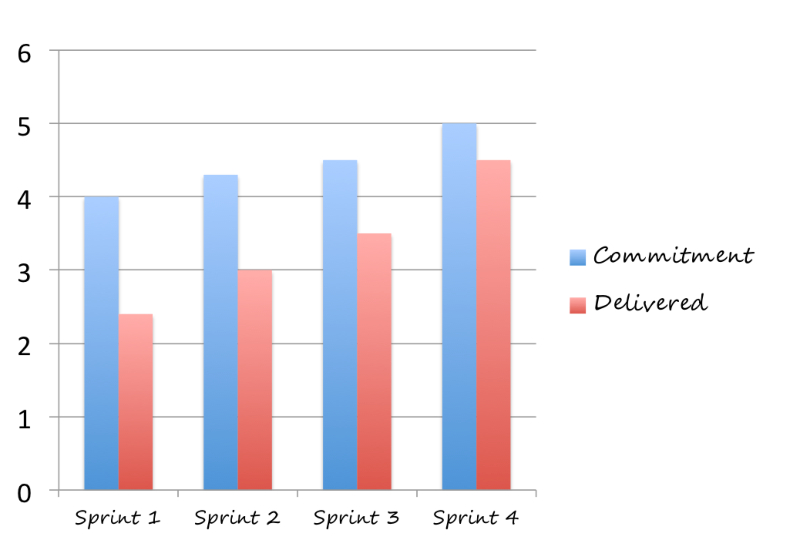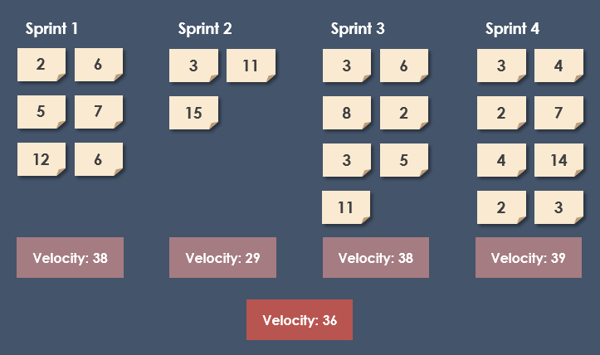To measure the speed of a vehicle, we need to calculate the average distance the vehicle travels per hour. But how do we measure the speed of completing a task for an individual or a group, especially when the nature of the task is not like a straight road that can progress regularly? That is why in the Scrum project, we need to use Velocity. So, what is Velocity and how is it applied? Let’s find out in the article below.
What is Velocity?
Velocity is a method of measuring the speed of work that the Development Team has completed consistently in a Sprint. Only completed Stories or Tasks are counted in Velocity.
Based on Velocity, the Product Owner (PO) can predict the working speed of the team. Because this method shows:
- The amount of work the team has completed and delivered to the user up to the present time.
- The time when the team can complete all stories in the product backlog.
- The number of stories to be transferred to User, PO on a predetermined day.
For example, The goal of the PO is to complete 300 Stories in a Product Backlog. According to the progress, the Development Team usually completes 50 Stories in each Sprint. Therefore, the PO can estimate that it will take the whole team 6 Sprints to complete the work in that Product Backlog.

Velocity Chart – A chart in which the blue column represents the estimated amount of work committed by the team, and the red column represents the amount of work the team has actually completed. This chart is commonly used in Agile and Scrum methodologies to track the progress of software projects. The vertical axis represents the amount of work completed, while the horizontal axis represents time. By comparing the amount of work completed to the committed work, the team can assess the project’s progress and adjust their plan for future development cycles.
How to measure Velocity?
Velocity is calculated as an average of past sprints. Typically, it takes some time for the team to find a stable Velocity. Velocity usually changes the most in the early sprints and then stabilizes as team members become familiar with the project, tools, and each other’s interactions.
For forecasting purposes, it is recommended to use the average of the 3-4 most recent Velocity values from past sprints. Let’s look at an example of estimated Velocity after 4 sprints below:

Estimating the team’s Velocity in the future
We only know the team’s completed work Velocity in the past, but what is important is to predict the Velocity in the future. According to Agile experts, the Velocity estimation is as follows:
For a stable team
Velocity is calculated based on the Velocity of the 3-4 most recent sprints (without averaging the entire time). Additionally, the team’s acceleration can be multiplied, with the recommended rate being 5% per sprint.
When a team member takes leave
The simplest way is to assume that all members have equal capabilities. For example, if the team has 5 members and 1 member takes leave, subtract 20%. In cases where higher accuracy is required, the completed work data of that member can be used to calculate the Velocity adjustment. For example, if a junior member has about half the capability of other members of the team, we will subtract 10%.
When a new team member joins
Estimate the capabilities of the new member compared to the old members of the team. For example, if the new member’s capabilities are equivalent to those of everyone else in the team, we can add 20% – for a team of 5 members. However, it should be noted that in the early stages, the new member will need time to adapt, so the Velocity will not be as calculated.
Is Velocity a KPI?
Velocity is not a KPI but rather a method for estimating a team’s work pace. Similarly, we cannot rely on Velocity to compare or evaluate the productivity of two different teams. This is because Velocity is calculated on the completed Stories – while Stories in each team are determined by the team and are not the same.
For example, suppose team A and team B both have 5 members with equivalent skills. Team A has a Velocity of 30 while team B has a Velocity of 40, it does not mean that team B has higher productivity than team A. Because the estimation method in each team is unique.
Overall, Velocity is a critical tool in Agile methodology that helps the team and stakeholders to plan, track, and improve the project’s progress and outcomes. By measuring the average speed of work completed in a Sprint, Velocity helps the team and Product Owner to create a predictable plan for the project, plan their workload, track progress, and identify areas for improvement. With Velocity as a guide, the team can work more efficiently, increase their productivity, and deliver high-quality work consistently.
This article is part of the Agile series. Read more related articles: What is Agile? And how does it work in project management?
